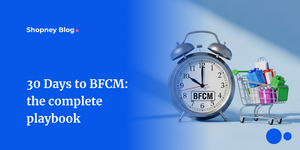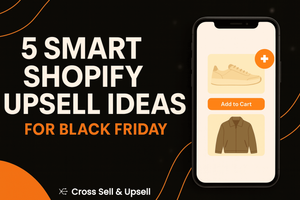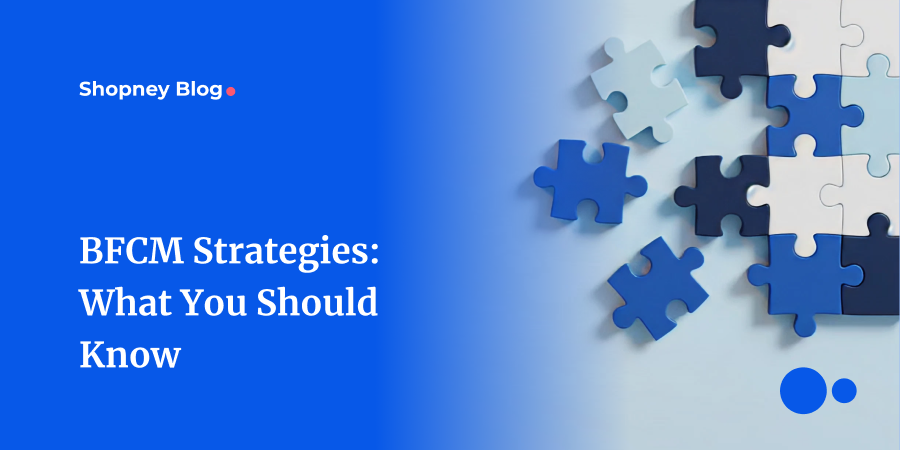
BFCM Strategies: What You Should Know

While the BFCM season is fast approaching, many Shopify merchants still see it as a weekend of deep discounts and record-breaking sales.
But the truth is, not everyone wins during BFCM and the difference lies in the unseen dynamics that shape this shopping season.
There are hidden rules behind every high-performing brand; patterns in shopper behavior, timing, and strategy that separate short-term gains from long-term growth.
In this article, we’ll uncover those lesser-known insights that can redefine how you approach BFCM; from understanding how your shoppers think to optimizing your mobile app experience for lasting impact.
Insight 1: Your AOV Dictates Who You Attract
Not all brands attract new customers in the same way during BFCM.
The difference often comes down to your average order value (AOV) and the kind of products you sell.
According to Klaviyo’s insights, in some industries, lower-priced products attract more first-time buyers, while in others, premium price points are what drive new customers to try a brand.
Apparel & Accessories and Food & Beverage:
In these categories, brands with lower AOVs tend to attract more new shoppers during BFCM.
These are impulse-driven segments where customers feel comfortable trying something new because the price point is accessible.
When a product feels affordable, the risk of trying a new brand almost disappears, making it easier to convert new shoppers quickly.
High-AOV brands in these categories don’t see the same spike as the majority of their customers are retained loyal shoppers and less price-driven.
The logic: low price = low risk = higher curiosity = more new shoppers.
Health & Beauty, Home & Garden, and Sporting Goods:
In contrast, for these categories, higher AOVs are more effective in bringing new customers during BFCM.
Lower-priced brands in these industries already have strong repeat customers; BFCM doesn’t shift their audience much.
These are thoughtful, higher-value purchases; the type people plan for and finally commit to when discounts arrive.
BFCM becomes the moment shoppers give themselves permission to buy something better, bigger, or higher-quality, often from a brand they haven’t tried before.
The logic: high price = high reward = justified splurge = more new brand trials.
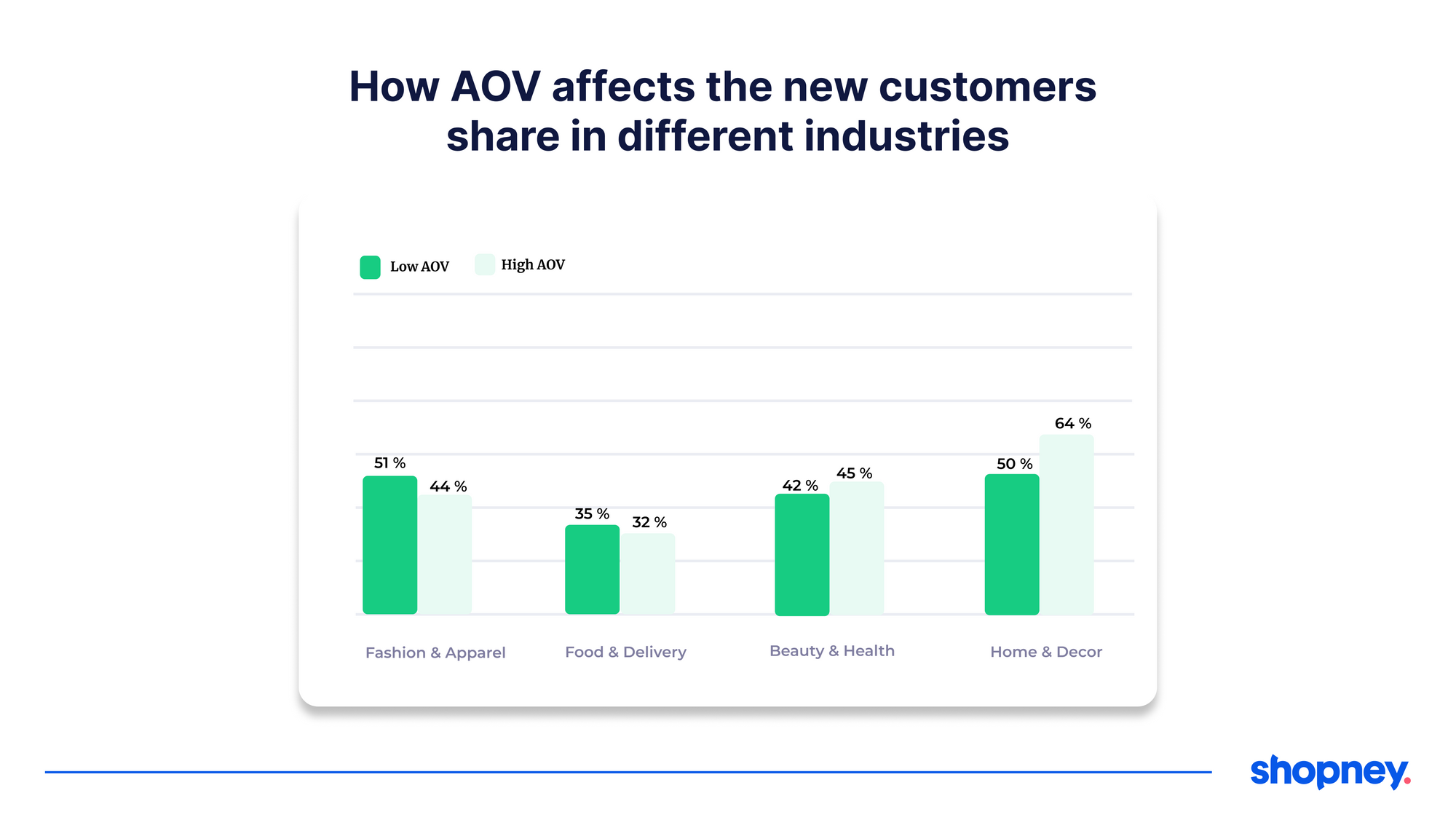
Why this matters
Knowing how your AOV shapes who you attract helps you build smarter campaigns, not just bigger discounts.
For Fashion & Food Brands
If your AOV is low: Showcase bundles, quick buys, and everyday essentials. Use limited-time messages to turn casual browsers into first-time buyers. Small, low-risk offers often create the biggest spikes in new customers. New customers are coming so you should give them a smooth UX, easy navigation and fast checkout process.
If your AOV is high: Focus on value and brand story. Show what makes your premium products worth it: quality, sustainability, or design details. Instead of heavy discounts, offer exclusive access, app-only deals, or bundle incentives that make higher prices feel justified.
For Beauty, Home & Sporting Goods Brands
If your AOV is low: Don’t over-discount; your loyal buyers already know you. Instead, have a mobile app to make reordering and replenishing easier. Automate reminders, highlight “frequently bought together” bundles, and reward repeat buyers with loyalty perks.
If your AOV is high: BFCM is your prime moment to attract new buyers who have been waiting for the right reason to commit. Put your flagship or hero products front and center. Combine this with a clean in-app journey — fewer clicks, faster checkout — so the decision feels natural.
Ultimately, aligning your BFCM strategy with your AOV means you’re not chasing every shopper, you’re attracting the ones that matter most for your business growth.
If you’re aiming to increase your average order value this BFCM, your mobile app is the best place to start.
Inside the app, you can easily feature bundles, upsells, and cross-sells in a way that feels organic to the shopping flow, not intrusive.
With personalized recommendations and AI-driven product suggestions, shoppers naturally discover complementary items and higher-value options.
The result? Every session becomes more meaningful, and every cart a little bigger.
While mobile apps can meaningfully lift your AOV, they’re not designed to create unrealistic spikes.
Their strength lies in steady, sustainable growth; helping shoppers discover more, buy smarter, and spend a bit more each time through a smoother, more personalized experience.

Insight #2: Repeat Shoppers Are the Real Goldmine
Most Shopify brands chase new customers during BFCM, but the truth is, your biggest profits often come from the people who already love your brand.
Your repeat shoppers aren’t just easier to sell to; they’re more valuable. They spend more per order, buy faster, and often promote your brand for free.
During BFCM, while everyone else fights to acquire new buyers at rising ad costs, your existing customers are the ones most likely to convert without extra spending.
Still, too many brands forget to make them feel special. This is your chance to change that.
And in this BFCM, repeat customers will drive the biggest revenue growth, coming in 45% higher than new shoppers Gross Merchandise Value (GMV).
Why this matters:
- Target repeat buyers with personalized push notifications and loyalty rewards.
- Offer early access to BFCM deals, limited-edition products, or members-only bundles.
- Integrate loyalty and retention tools like Growave Loyalty, or LoyaltyLion, to give your best customers real value.
Insight #3: Mobile experience is the go-to during BFCM sales
Many brands pour their energy into email campaigns and website landing pages, but overlook where most of the action really happens during BFCM: mobile.
During such a high-traffic, high-pressure event, you can’t afford friction. A slow site, complicated navigation, or confusing user experience can ruin your BFCM conversions.
Instead of depending solely on your website, combine your efforts across channels: email, social, email and especially your mobile app to create one seamless experience.
If customers are already on their phones, give them the fastest, easiest, and most enjoyable way to buy from you.
Why this matters:
Your BFCM plans should involve building your direct, distraction-free channel where you can guide shoppers toward the offers you want them to see, deliver an experience they’ll love, and turn discount-driven buyers into loyal, repeat customers long after BFCM ends.
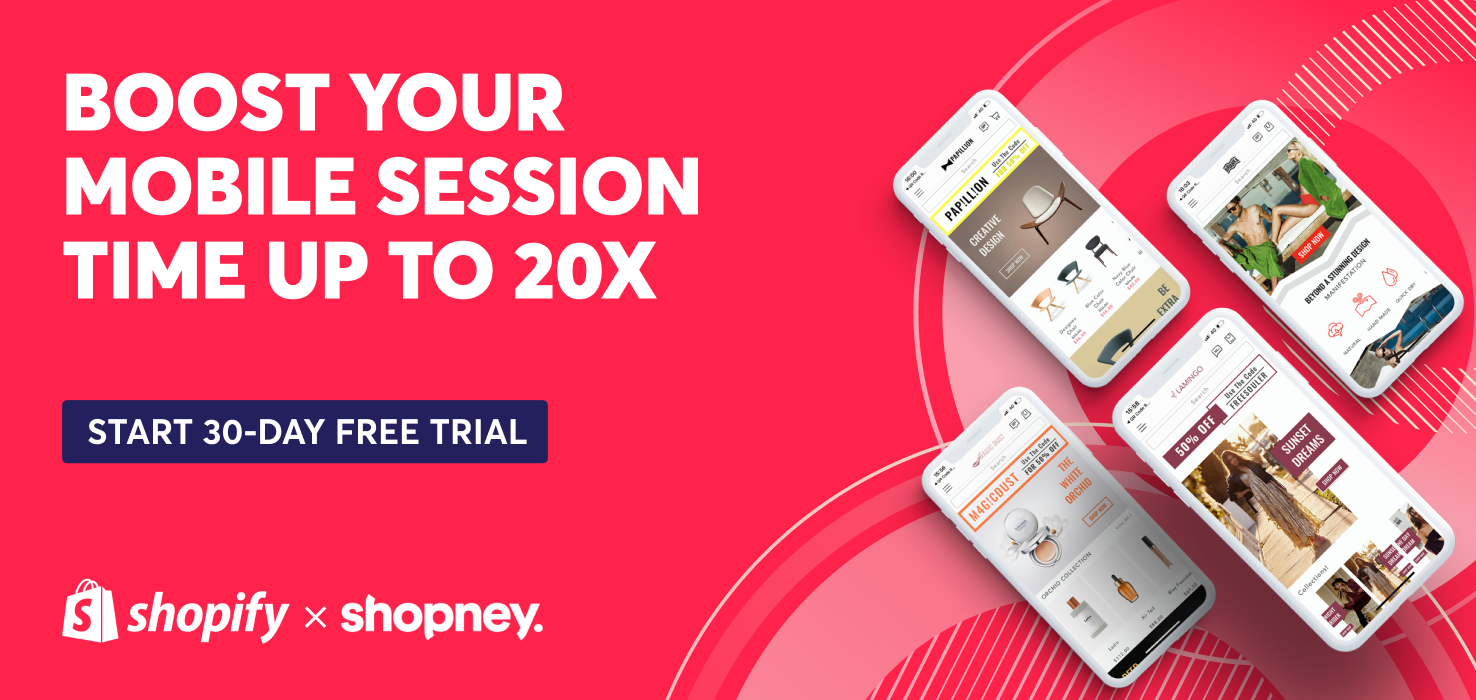
Insight #4: Post-BFCM Is the Real Opportunity
For most brands, BFCM ends when the discounts stop. But for the best Shopify merchants, that’s when the real growth begins.
The true measure of success isn’t how much you sell during the weekend; it’s how many of those shoppers you keep engaged afterward.
Your BFCM campaign brings a huge wave of first-time buyers and new app installs.
What happens next determines whether they become one-time discount hunters or loyal, long-term customers.
Why this matters
After BFCM, attention shifts and inboxes calm down: the perfect moment to re-engage customers without the noise.
This is when your mobile app can play its most strategic role, helping you stay close to your audience and strengthen retention for Q1 and beyond.
Here are a few ways to turn your post-BFCM momentum into lasting growth:
Follow up with purpose
Don’t let your BFCM customers fade away. Build a post-purchase journey that feels personal, not promotional. Use your app to send thoughtful push notifications that reconnect.
These simple, well-timed messages remind customers that your brand values them beyond the sale.
Turn new buyers into repeat customers
Every new shopper is an opportunity to build a relationship. Keep them engaged with in-app product recommendations, cross-sell widgets, and smooth re-ordering experiences.
Encourage a second purchase by showing complementary products or offering loyalty & rewards programs that make returning feel natural.

Listen and improve
After the rush, take time to understand how your customers experienced BFCM.
Use short post-purchase surveys, app reviews, or email marketing to collect feedback about what worked and what could be better.
This not only helps improve your next campaign but also shows customers you care about their experience; a simple action that builds long-term trust.
Recommended read: The secret to retention? Ask your customers!
You don’t need to prepare for BFCM alone. Let Shopney help you implement the right strategies by booking a demo with us here.


